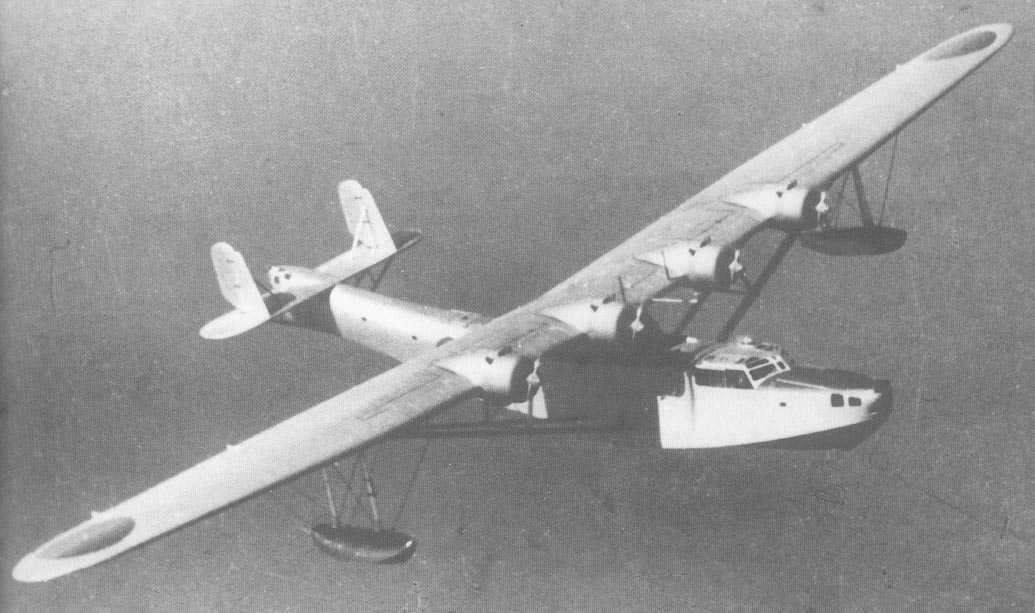AMD-K6-III/450AHX — AMD — WikiChip
AMD-K6-III/450AHX is a 32-bit x86 desktop microprocessor designed by AMD and introduced in early 1999. This MPU which was manufactured on a 0.25 µm process, based on K6-III microarchitecture, operated at 450 MHz with a bus of 100 MHz and a multiplier of 4.5. This processors had a maximum power dissipation rating of 29.5 W.
- Main article: K6-III § Cache
L3$ can be 512 KiB to 2 MiB, depending on manufacturer and motherboard model. L3$ is off-chip.
| Cache Info [Edit Values] | ||
| L1I$ | 32 KiB
0.0313 MiB |
1×32 KiB 2-way set associative |
| L1D$ | 32 KiB
0.0313 MiB |
1×32 KiB 2-way set associative |
| L2$ | 256 KiB
0.25 MiB |
1×256 KiB 4-way set associative (shared) |
Graphics[edit]
This SoC has no integrated graphics processing unit.
Features[edit]
[Edit/Modify Supported Features]
|
Supported x86 Extensions & Processor Features |
||||||||
|
||||||||
- Auto-power down state
- Stop clock state
- Halt state
Facts about «AMD-K6-III/450AHX — AMD»
RDF feed
| base frequency | 449.99 MHz (0.45 GHz, 449,990 kHz) + |
| bus rate | 99.99 MT/s (0.1 GT/s, 99,990 kT/s) + |
| bus speed | 99. 99 MHz (0.1 GHz, 99,990 kHz) + 99 MHz (0.1 GHz, 99,990 kHz) + |
| bus type | FSB + |
| clock multiplier | 4.5 + |
| core count | 1 + |
| core family | 5 + |
| core model | 9 + |
| core name | Sharptooth + |
| core stepping | 0 + |
| core voltage | 2.4 V (24 dV, 240 cV, 2,400 mV) + |
| core voltage tolerance | 0.1 V + |
| cpuid | 590 + |
| designer | AMD + |
| die area | 118 mm² (0.183 in², 1.18 cm², 118,000,000 µm²) + |
| family | K6-III + |
| first announced | May 13, 1999 + |
| first launched | May 13, 1999 + |
| full page name | amd/k6-iii/amd-k6-iii-450ahx + |
| instance of | microprocessor + |
| io voltage | 3.368 V (33.675 dV, 336.75 cV, 3,367.5 mV) + |
| io voltage tolerance | 7% + |
| l1d$ description | 2-way set associative + |
| l1d$ size | 0. |
| l1i$ description | 2-way set associative + |
| l1i$ size | 0.0313 MiB (32 KiB, 32,768 B, 3.051758e-5 GiB) + |
| l2$ description | 4-way set associative + |
| l2$ size | 0.25 MiB (256 KiB, 262,144 B, 2.441406e-4 GiB) + |
| ldate | May 13, 1999 + |
| manufacturer | AMD + |
| market segment | Desktop + |
| max case temperature | 338.15 K (65 °C, 149 °F, 608.67 °R) + |
| max cpu count | 1 + |
| max memory | 4,096 MiB (4,194,304 KiB, 4,294,967,296 B, 4 GiB, 0.00391 TiB) + |
| max storage temperature | 423.15 K (150 °C, 302 °F, 761.67 °R) + |
| microarchitecture | K6-III + |
| min case temperature | 273.15 K (0 °C, 32 °F, 491.67 °R) + |
| min storage temperature | 208. 15 K (-65 °C, -85 °F, 374.67 °R) + 15 K (-65 °C, -85 °F, 374.67 °R) + |
| model number | AMD-K6-III/450AHX + |
| name | AMD-K6-III/450AHX + |
| part number | AMD-K6-III/450AHX + |
| platform | Super 7 + |
| power dissipation | 29.5 W (29,500 mW, 0.0396 hp, 0.0295 kW) + |
| process | 250 nm (0.25 μm, 2.5e-4 mm) + |
| series | K6-III Desktop + |
| smp max ways | 1 + |
| technology | CMOS + |
| thread count | 1 + |
| transistor count | 21,300,000 + |
| word size | 32 bit (4 octets, 8 nibbles) + |
AMD K6-III 450 — AMD-K6-III/450AHX-WWW.NBCPU.COM
We specialized in CPU trade, contact us if you need bulk sale or purchase this kind of CPU,please do not hesitate to contact us :
Email :[email protected],Tel: +86 0755-82928539
| Type:CPU | Manufacturer:AMD |
| family:K6-III | microprocessors:AMD K6-III 333 — AMD-K6-III/333AFR |
| Type | CPU / Microprocessor |
| Market segment | Desktop |
| Family |
AMD K6-III |
| CPU part number |
|
| Frequency | 450 MHz |
| Bus speed | 100 MHz |
| Clock multiplier | 4. 5 5 |
| Package | 321-pin ceramic staggered PGA 1.95″ x 1.95″ (4.95 cm x 4.95 cm) |
| Socket | Super 7 |
| Introduction date | May 13, 1999 |
| Architecture / Microarchitecture | |
| Microarchitecture | K6 |
| Processor core | Sharptooth |
| CPUID | 591 |
| Manufacturing process | 0.25 micron 21.3 million transistors |
| Data width | 32 bit |
| Floating Point Unit | Integrated |
| Level 1 cache size | 32 KB instruction cache with additional 20 KB pre-decode cache 32 KB writeback data cache |
| Level 2 cache size | 256 KB full speed |
| Physical memory | 4 GB |
| Features |
|
| Low power features |
|
| Electrical / Thermal parameters | |
| V core | 2. 4V ± 0.1V 4V ± 0.1V |
| Min/Recommended/Max V I/O or secondary | 3.135V / 3.3V / 3.6V |
| Minimum/Maximum operating temperature | 0°C — 65°C |
| Minimum/Typical/Maximum power dissipation | 4.8 Watt (Stop Clock mode) / 17.7 Watt / 29.5 Watt |
other microprocessors
|
AMD K6-III 450 — AMD-K6-III/450AFX |
AMD K6-III 400 — AMD-K6-III/400 (65C 2.4V ES) |
|
AMD Mobile K6-III 333 — AMD-K6-III/333AFK |
AMD Mobile K6-III 350 — AMD-K6-III/350AFK |
|
AMD Mobile K6-III 366 — AMD-K6-III/366AFK |
AMD Mobile K6-III 380 — AMD-K6-III/380AFK |
|
AMD Mobile K6-III 400 — AMD-K6-III/400ACK |
AMD Mobile K6-III 433 — AMD-K6-III/433ACK |
|
AMD Mobile K6-III 450 — AMD-K6-III/450ACK |
AMD K6-IIIE+ 400 — K6-III+/400ATZ |
|
AMD K6-IIIE+ 400 — K6-III+/400ITZ |
AMD K6-IIIE+ 450 — K6-III+/450APZ |
Tel:+86 0755-83247530 Email:raymond@nbcpu. com
com
NBCPU All rights reserved..
Compare AMD K6-II 475 vs AMD K6-III 450
| AMD K6-II 475 | AMD K6-III 450 |
|---|---|
| Both processors from AMD | |
| Both processors belong to the K6 | . in one time interval |
| Both models belong to the table segment | |
| Both CPU models operate on the Socket 7 | processors are identical in terms of nuclei: 1 nucleus | have 1 stream
The technological process of these processors is equal to 250 nanometers |
| Processors have the same cache of the 1st 64 KB | |
| AMD K6-II 475 | AMD K6-III 450 | |
|---|---|---|
| The nucleus architecture of the K6-III 475 processor is called Chompers | The nucleus architecture of the K6-III 450 450 450 | Data on the system bus AMD K6-III 450 — 100 MHz |
| III 450 | K6-III 450 is not much inferior in terms of frequency, 450 MHz vs. 475 MHz 475 MHz |
|
| K6-II 475 contains much fewer transistors, 9 million vs. 21 million , 21 million vs. 9 million | ||
| K6-II 475 has a clear superiority in terms of thermal power, its TDP is slightly lower than that of its rival and is equal to 19.8 W | The K6-III 450 needs a more powerful cooling system, because. to. its heat dissipation reaches 29.5 W |
Comparison of instructions and technologies
| Technology or instruction name | AMD K6-II 475 | AMD K6-III 450 | Short description |
|---|---|---|---|
| Halt mode | — | Stop mode. | |
| Stop Grant mode | — | Energy saving status. nine0017 |
| Technology or instruction name | AMD K6-II 475 | AMD K6-III 450 | Short description |
|---|---|---|---|
| MMX (Multimedia Extensions) | Multimedia extensions. |
||
| 3DNow! | Optional MMX extension for AMD processors. nine0017 |
Benchmarks
Overall Performance Rating
Overall Rating is calculated by a formula, taking into account indicators such as benchmark test results, base frequency, temperature data, instructions, socket, auto-overclocking technologies, structure, number of cores, threads, year release, as well as other data. The results of the overall rating showed that the K6-III 450 processor is not much superior to its rival K6-II 475. The K6-II 475 processor itself was able to score 68.29points, slightly losing to the competitor.
PassMark CPU Mark
Almost all CPUs presented on our site have been subjected to PassMark tests. The benchmark includes a large set of tools for a comprehensive assessment of the performance of personal computers, including the CPU. Among which are game physics calculations, encryption, floating point calculations, extended instruction checking, compression, integer calculations, multi-threaded and single-threaded tests. It is also possible to compare data with other configurations in the database. Probably the most popular benchmark on the web. The Performance Test showed slightly better performance for the K6-III 450 (68 points) over the K6-II 475 (58 points). The K6-II 475 falls short in this test. nine0110
It is also possible to compare data with other configurations in the database. Probably the most popular benchmark on the web. The Performance Test showed slightly better performance for the K6-III 450 (68 points) over the K6-II 475 (58 points). The K6-II 475 falls short in this test. nine0110
Cinebench 10 (32 bit) Single-threaded test
MAXON has appeared, and is based on the 3D editor Cinema 4D. It uses a method of geometric optics — ray tracing. Single-Thread uses only one rendering thread and one core in its test. It is possible to test many processor systems. Works on Windows, Mac OS X. The basic performance testing mode is a photorealistic rendering of a 3D scene, working with light, simulating global illumination, spatial light sources, multilevel reflections, and procedural shaders. This benchmark for testing video cards and processors is already obsolete by now. nine0110
Cinebench 10 (32 bit) Multi-thread test
Multi-Thread is another test variant in the Cinebench R10 benchmark that uses multi-thread and multi-core testing mode. It is important to note that the number of threads in this version is limited to 16.
It is important to note that the number of threads in this version is limited to 16.
Cinebench 11.5 (64-bit) Multi-threaded test
Multi-threaded version of the CINEBENCH 11.5 test, — has the ability to test the processor for all 100, using all threads and cores. It differs from previous versions of the program, 64 threads will be involved here. Testing the K6-III 450 in the Cinebench 11.5 benchmark showed a result of 0.08 points, slightly ahead of its competitor. At this time, K6-II 475 gets its 0.07 points, which fully justifies their close positions in the ranking. nine0110
Cinebench 11.5 (64-bit) Single-threaded test
Good old multifunctional Cinebench version 11.5 from the Maxon team. In tests, as before, the ray tracing method is used, a complex 3D space is calculated with many crystalline and translucent and glass spheres. His tests are still relevant. In this case, Single-Core tests occur through the use of one core and one thread. The result of the test is the «number of frames per second» parameter. Testing in single-threaded mode of the K6-III 450 processor in Cinebench 11.5 Single-Core showed that with a score of 0.08 points, it is not far ahead of the competitor. But the K6-II 475 itself scored 0.07 points in this test. nine0110
Testing in single-threaded mode of the K6-III 450 processor in Cinebench 11.5 Single-Core showed that with a score of 0.08 points, it is not far ahead of the competitor. But the K6-II 475 itself scored 0.07 points in this test. nine0110
Cinebench 15 (64-bit) Multi-thread test
The Multi-Thread version of Cinebench R15 will load your assembly completely, showing everything it can. All CPU cores and threads are involved in the process of rendering detailed 3D models. It is ideal for testing modern multi-threaded processors from Intel and AMD, as it can use 256 threads. The K6-III 450, with a score of 6.76, doesn’t outperform much in the multi-threaded Cinebench r15 benchmark. The K6-II 475 is slightly behind it with 5.76 points. nine0110
Cinebench 15 (64-bit) Single-threaded test
Cinebench Release R15 is the latest tester from the Finns from Maxon. In this version of Single Core, 1 thread is used for rendering. A complex 3D scene is rendered with a large number of light sources, highly detailed objects and reflections. It conducts system testing: both video cards and CPU. For processors, the result of the analysis will be the number of PTS points, and for video adapters, the value of frames per second FPS. The single-threaded test of the K6-III 450 processor in the Cinebench R15 program showed a result of 6.74 points, slightly ahead of the competitor. With a score of 5.74 on this test, the K6-II 475 is not far behind. nine0110
It conducts system testing: both video cards and CPU. For processors, the result of the analysis will be the number of PTS points, and for video adapters, the value of frames per second FPS. The single-threaded test of the K6-III 450 processor in the Cinebench R15 program showed a result of 6.74 points, slightly ahead of the competitor. With a score of 5.74 on this test, the K6-II 475 is not far behind. nine0110
Geekbench 4.0 (64-bit) Multi-threaded test
This is already a 64-bit multi-threaded Geekbench 4 benchmark. It has wide cross-platform support for various operating systems and devices, making Geekbench tests the most popular now. In Geekbench 4 64-bit multi-core, the K6-III 450 scored 143.31 points, slightly better than the K6-II 475. In this test, the K6-II 475 achieves its 122.31 points.
Geekbench 4.0 (64-bit) Single thread test
The Single-Core version uses one thread. This product, like its earlier versions, can be run on operating systems running Mac OS, Windows, Linux. For the first time, this version also supports Android and iOS mobile devices. The latest single-threaded version of Geekbench 4 to date for testing laptops and desktops. The K6-III 450 scored higher in single thread testing from Geekbench 4, with a score of 143.72, but not far ahead of the competition. But the K6-II 475 itself also showed a good score of 122.51 points, slightly losing ground to the K6-III 450.
For the first time, this version also supports Android and iOS mobile devices. The latest single-threaded version of Geekbench 4 to date for testing laptops and desktops. The K6-III 450 scored higher in single thread testing from Geekbench 4, with a score of 143.72, but not far ahead of the competition. But the K6-II 475 itself also showed a good score of 122.51 points, slightly losing ground to the K6-III 450.
Geekbench 3 (32 bit) Multi-thread test
Multi Core version of Geekbench 3 — can allow you to make a strong test of your PC and show how stable your OS is.
Geekbench 3 (32 bit) Single-threaded test
Cross-platform Geekbench is often used to evaluate the system under Mac, but it works on both Linux and Windows. The main purpose is to check the speed of the CPU. The 32-bit version of the benchmark uses only one processor core and one thread. nine0110
Geekbench 2
Our archive contains up to two hundred CPU models that have test data in this benchmark. Today there are more recent options: the fifth and fourth. Geekbench 2 is currently out of date.
Today there are more recent options: the fifth and fourth. Geekbench 2 is currently out of date.
X264 HD 4.0 Pass 1
In essence, this is a practical test of processor performance by transcoding HD files to H.264 format, the so-called MPEG 4 x264 codec. An ideal benchmark for multi-core and multi-threaded CPUs. The frame rate processed per second is the result of the test. This test is faster than Pass 2 because it renders at the same speed. The MPEG 4 video processing speed of the K6-III 450 is slightly higher than that of the K6-II 475, and amounted to 1.83 FPS. The K6-II 475 was able to score 1.55 FPS, slightly behind the first processor. nine0110
X264 HD 4.0 Pass 2
This is a slightly different, slower test based on video file compression. You need to understand that a real task is being simulated, and the x264 codec is used in many video programs. The end result is also defined in frames per second. The result is a better quality video file. The same MPEG4 x264 codec is used, but the rendering is already happening at a variable rate. This means that the test results realistically assess the effectiveness of the platform. During the encoding of the video file by the K6-III 450 processor into the mpeg4 format, a processing speed of 0.42 Frames / s was obtained. While the K6-II 475 was slightly behind with a score of 0.36 fps. nine0110
The same MPEG4 x264 codec is used, but the rendering is already happening at a variable rate. This means that the test results realistically assess the effectiveness of the platform. During the encoding of the video file by the K6-III 450 processor into the mpeg4 format, a processing speed of 0.42 Frames / s was obtained. While the K6-II 475 was slightly behind with a score of 0.36 fps. nine0110
3DMark06 CPU
Benchmark to evaluate the performance of the video system, and CPU. CPUs are tested in 2 ways: the artificial intelligence performs a path search, and the second test simulates the system using PhysX. Based on DirectX 9.0 by Futuremark. This test is often used by fans to overclock the system and overclockers and gamers. The K6-III 450 performed slightly faster in the gaming physics and pathfinding tests, scoring up to 111.09 points. K6-II 475 also coped with these tasks, showing a good result 95.03 points.
3DMark Fire Strike Physics
Approximately two hundred CPUs on our Internet resource have data in the 3DMark Fire Strike Physics test.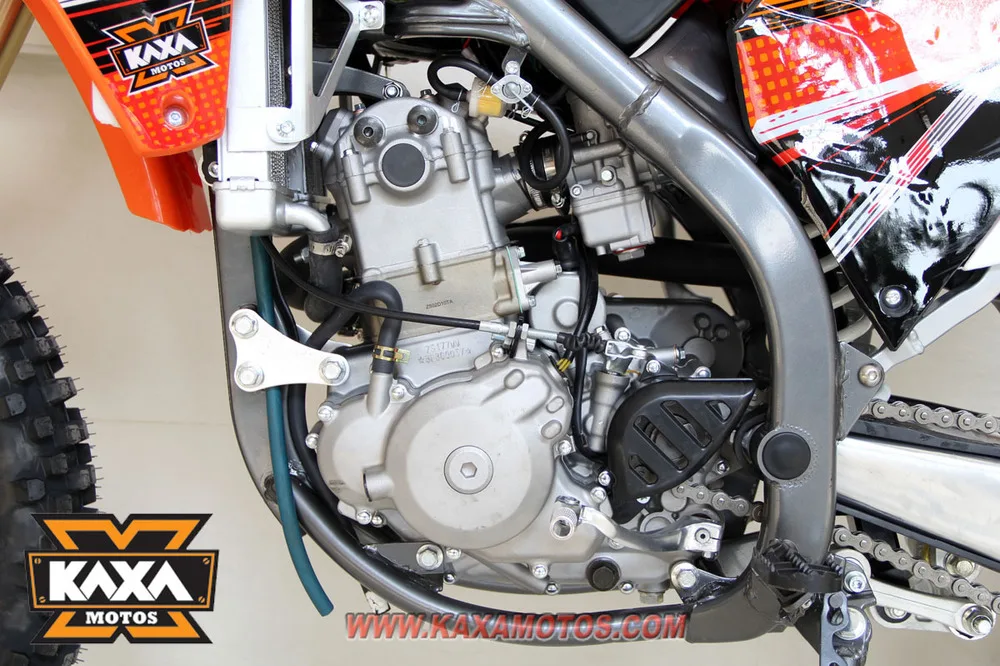 It represents a test that performs game physics calculations.
It represents a test that performs game physics calculations.
WinRAR 4.0
Everyone knows the archiver. The checks took place under the control of Windows. The compression speed was estimated by the RAR algorithm; for this, large volumes of randomly generated files were generated. The resulting speed during compression «kilobytes per second» — this is the result of testing. K6-III 450 is slightly ahead of the competitor in WinRAR file compression speed, the result of data encoding was 45.97 Kb/s. The K6-II 475 delivered an encoding rate of 39.49 Kbps.
TrueCrypt AES
Not exactly a tester, but the results of its use can evaluate the performance of the entire system. It includes the function of instant encryption of disk partitions. Our site demonstrates the results of encryption speed in gigabytes per second using the AES algorithm. Unfortunately support for this project was stopped in 2014. The program can work in different operating systems: Linux, Windows and Mac OS X.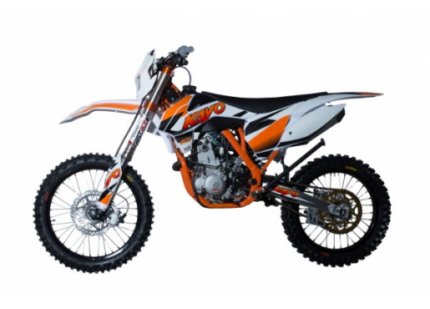
AMD K6-III | this… What is AMD K6-III?
Interpretation
- AMD K6-III
-
AMD K6-III architecture
IA-32 (x86-32) microprocessor manufactured by AMD. Development of the AMD K6 and AMD K6-2 processor. First introduced by AMD Corporation in February 1999. It was positioned as a direct competitor to the Pentium III processor at a lower cost. nine0110
Is one of the most productive processors for Socket7/Super7 systems. The full-speed cache integrated into the kernel had to somehow fix the chipset’s limitation on memory caching. The only chipset that did not bypass memory cache remained «on paper» (ALI Aladdin 7).
Models
AMD K6-III
K6-III (Sharptooth core)
- CPU ID: AuthenticAMD Family 5 Model 9
- 21.
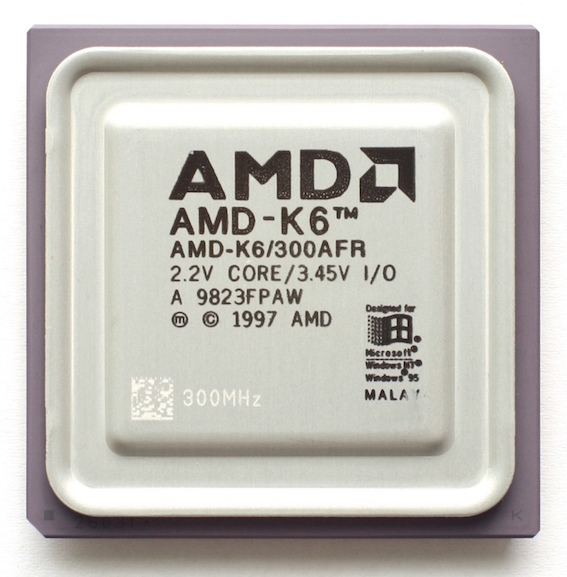 3 million transistors in 250nm process. nine0322
3 million transistors in 250nm process. nine0322
- Crystal area: 118 mm²
- Typical power consumption/heat dissipation: 18.1-29.5 W (depending on frequency and model)
- First level cache: 32+32 KB (data+instructions).
- Second level cache: 256 KB full speed, on-die.
- L3 cache: up to 1MB, located on the motherboard.
- Instruction support: MMX, 3DNow!
- Connector: Socket 7.
- System bus frequency: 100 MHz.
- Frequency: 400, 450 MHz.
nine0321 Supply voltage: 2.2 and 2.4 V.
Also available in mobile version:
K6-III-P
- CPU ID: AuthenticAMD Family 5 Model 9
- Process technology: 250 nm
- First level cache: 32+32 KB (data+instructions).
- Second level cache: 256 KB full speed, on-die.
- Instruction support: MMX, 3DNow!
- Connector: Socket 7, Super7
- FSB frequency: 66, 95, 96.2, 66/100, 100 MHz
- Supply voltage: 2.
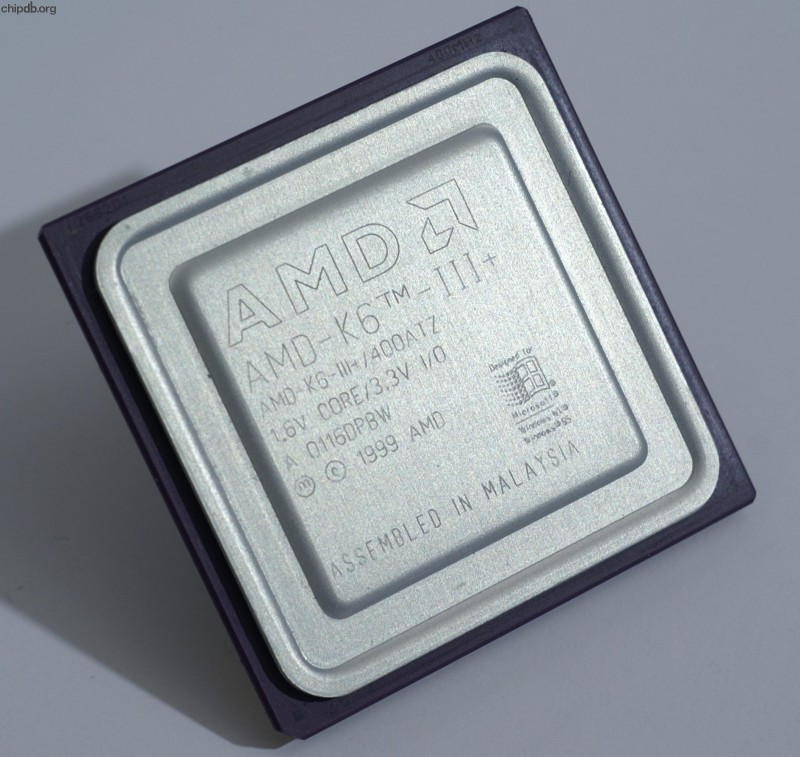 0 and 2.2 V.
0 and 2.2 V. - Submitted: May 31, 1999
- Frequency: 350, 366, 380, 400, 433, 450 MHz
AMD K6-IIIE+
K6-III+
- CPU ID: AuthenticAMD Family 5 Model 13
- Process technology: 180 nm
- First level cache: 32+32 KB (data+instructions).
- Second level cache: 256 KB full speed, on-die. nine0322
- L3 cache: up to 1MB, located on the motherboard.
- Instruction support: MMX, Extended 3DNow!, PowerNow!
- Connector: Super7
- FSB frequency: 95, 100 MHz
- Supply voltage: 2.0 V (1.6 and 1.8 V for low voltage models)
- Submitted: April 18, 2000
- Frequency: 400, 450, 475, 500 MHz
- K6-2+
- CPU ID: K6-2+ AuthenticAMD Family 5 Model 13
- Process technology: 180 nm
- First level cache: 32+32 KB (data+instructions).
- Second level cache: 256 KB full speed, on-die.
